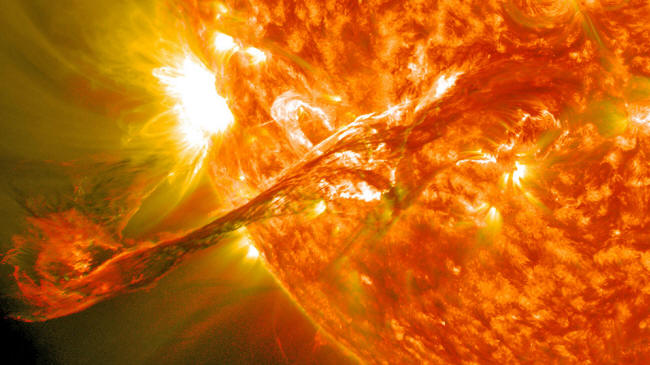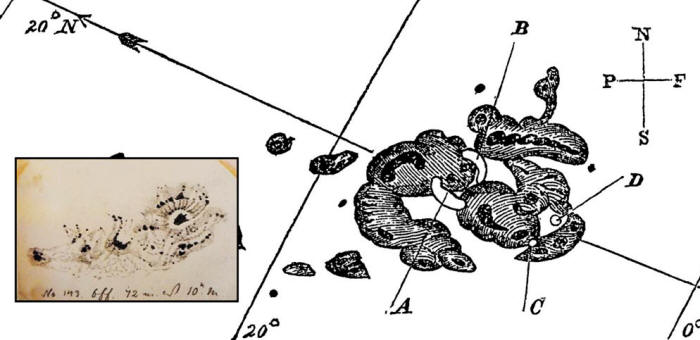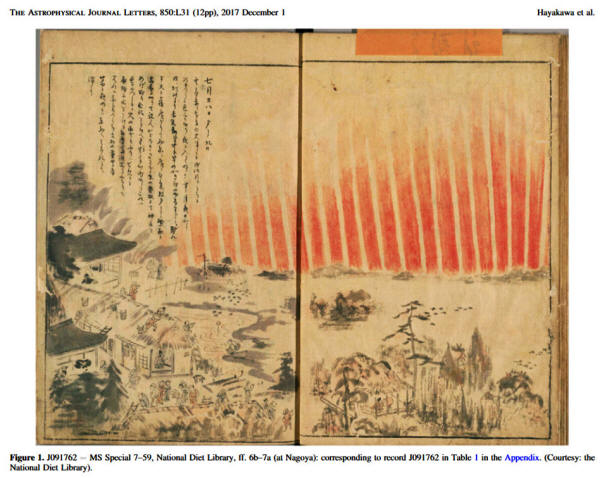|
by Dr.Tony Phillips
from
SpaceWeatherArchive Website
On Sept. 1st, 1859, the most ferocious solar storm in recorded history engulfed our planet.
The storm rocked Earth's
magnetic field, sparked auroras over Cuba, the Bahamas and Hawaii,
set fire to telegraph stations, and wrote itself into history books
as the Biggest-Solar-Storm-Ever...
by Richard Carrington on Sept. 1, 1859, and (inset) Heinrich Schwabe on Aug. 27, 1859.
[Ref]
To generations of space weather forecasters who learned in school that the Carrington Event was one of a kind, these are unsettling thoughts.
Modern technology is far more vulnerable to solar storms than 19th-century telegraphs.
A modern-day Carrington Event could cause widespread power outages along with disruptions to navigation, air travel, banking, and all forms of digital communication.
A good example is the great storm of mid-September 1770, when extremely bright red auroras blanketed Japan and parts of China.
Captain Cook himself saw the display from near Timor Island, south of Indonesia.
Hisashi Hayakawa and colleagues recently found drawings of the instigating sunspot, and it is twice the size of the Carrington sunspot group.
Paintings, dairy entries,
and other newfound records, especially from China, depict some of
the lowest-latitude auroras ever, spread over a period of 9 days. of red auroras over Japan in mid-September 1770. [Ref]
Moreover,
Hayakawa's team has
delved into the history of other storms as well, examining Japanese
diaries, Chinese and Korean government records, archives of the
Russian Central Observatory, and log-books from ships at sea - all
helping to form a more complete picture of events.
Two more storms are nipping at Carrington's heels:
...were only a factor of
~2 less intense. (Check Table 1 of
Hayakawa et al's 2019 paper for
details.) a giant naked-eye sunspot group (left) and auroras (right) in Feb. 1872. [Ref]
Are we overdue for another Carrington Event?
Maybe. In fact, we might
have just missed one...
History books, let the
re-write begin...
|





